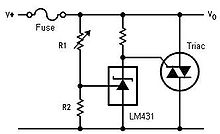- Joined
- Jan 22, 2008
- Messages
- 52,462
- Helped
- 14,754
- Reputation
- 29,790
- Reaction score
- 14,113
- Trophy points
- 1,393
- Location
- Bochum, Germany
- Activity points
- 298,270
Every power MOSFET has built-in reverse diodes, you don't get them without it. They are not necessarily shown in the symbol. It's a side effect of the transistor geometry that can't be removed on purpose.Does this mean i should use mosfets without internal diodes instead of IRFP 250 ?
